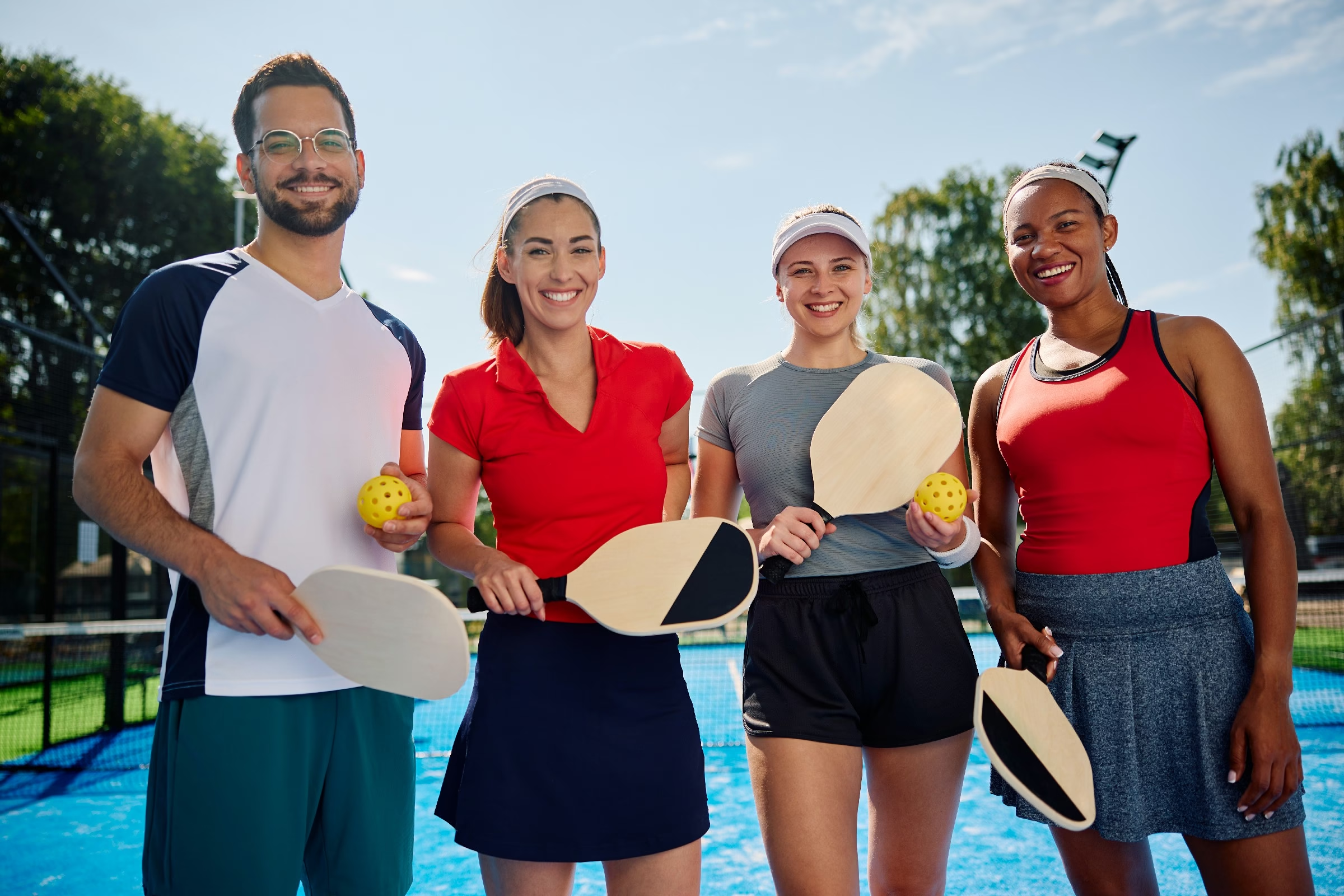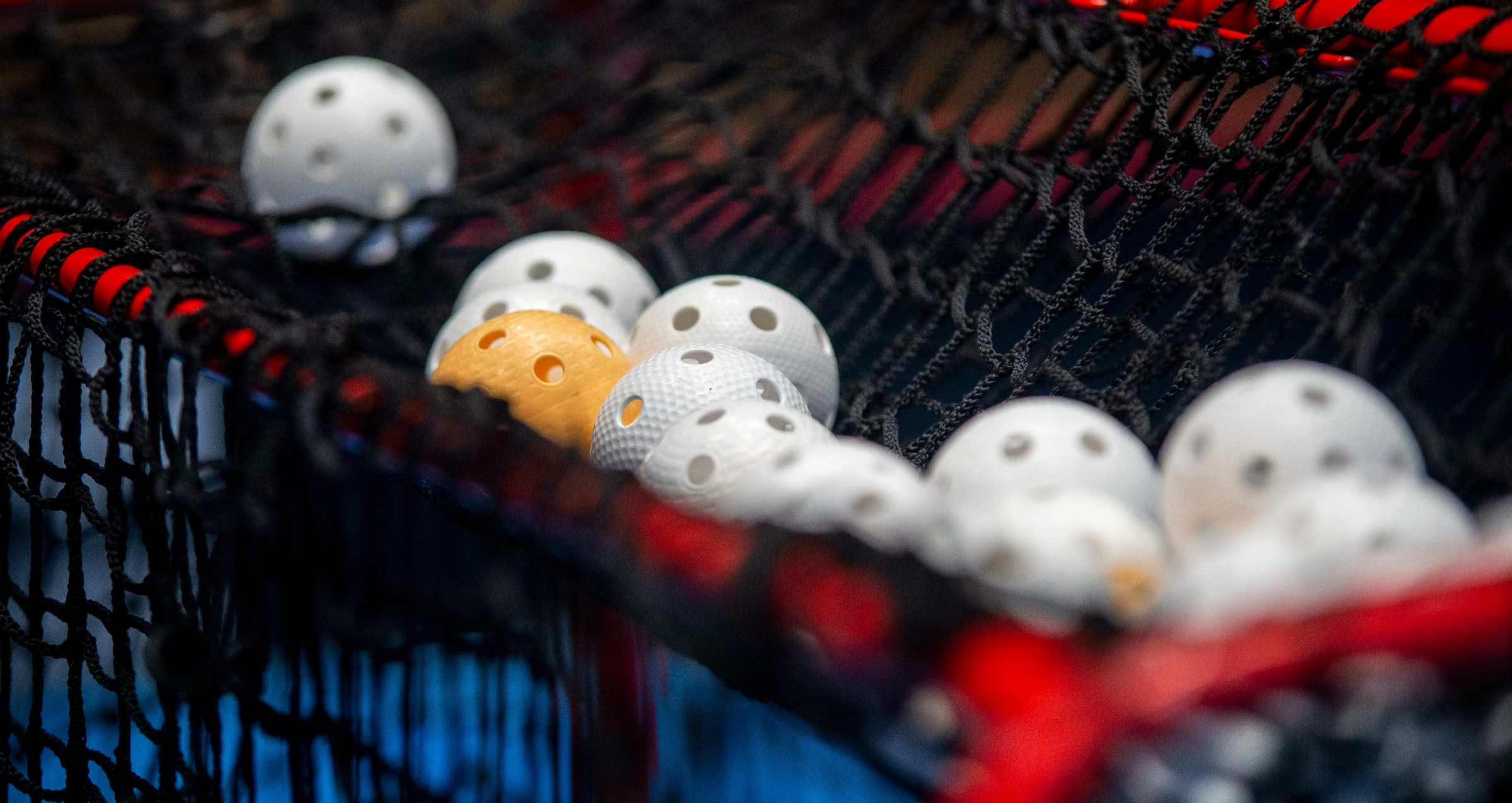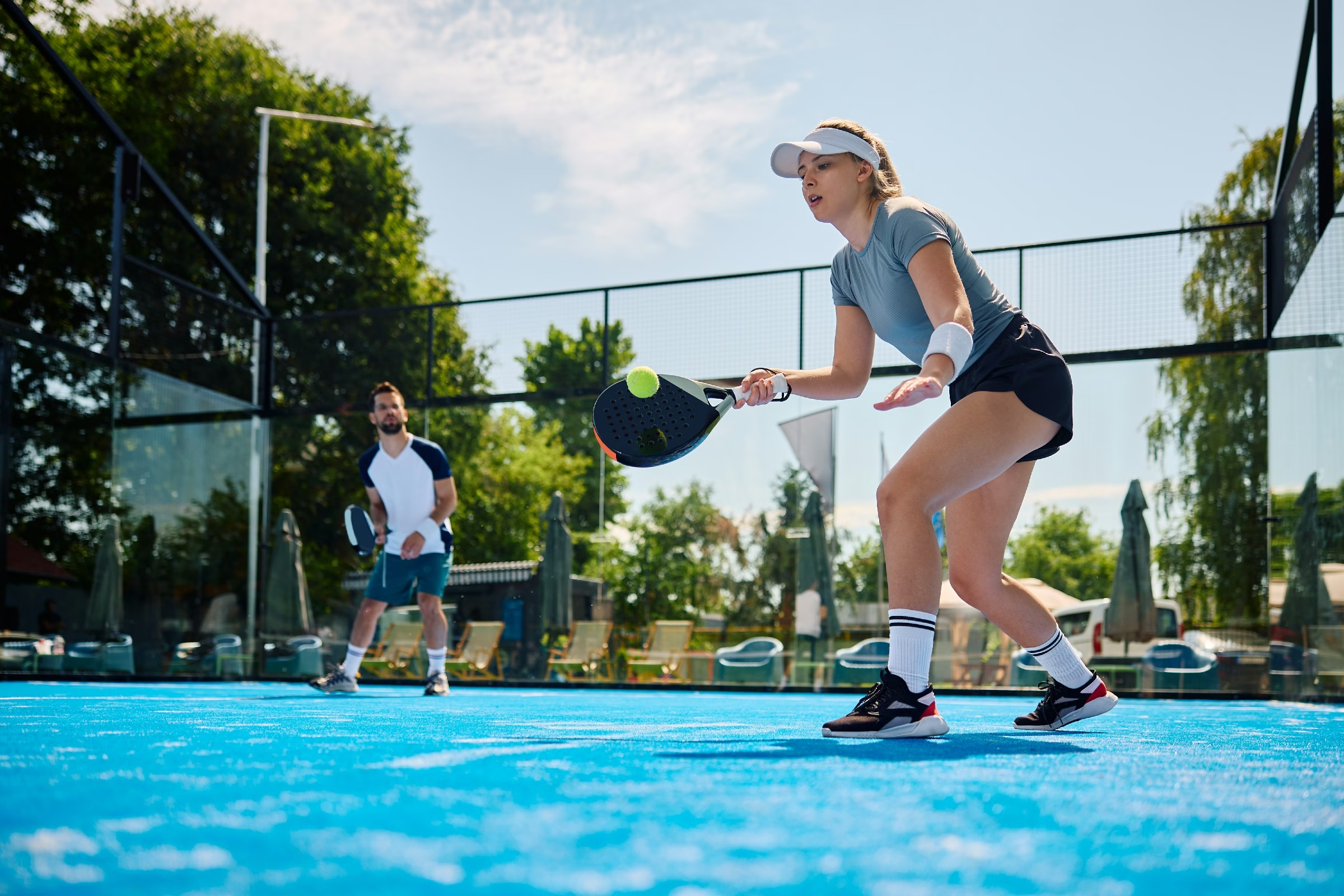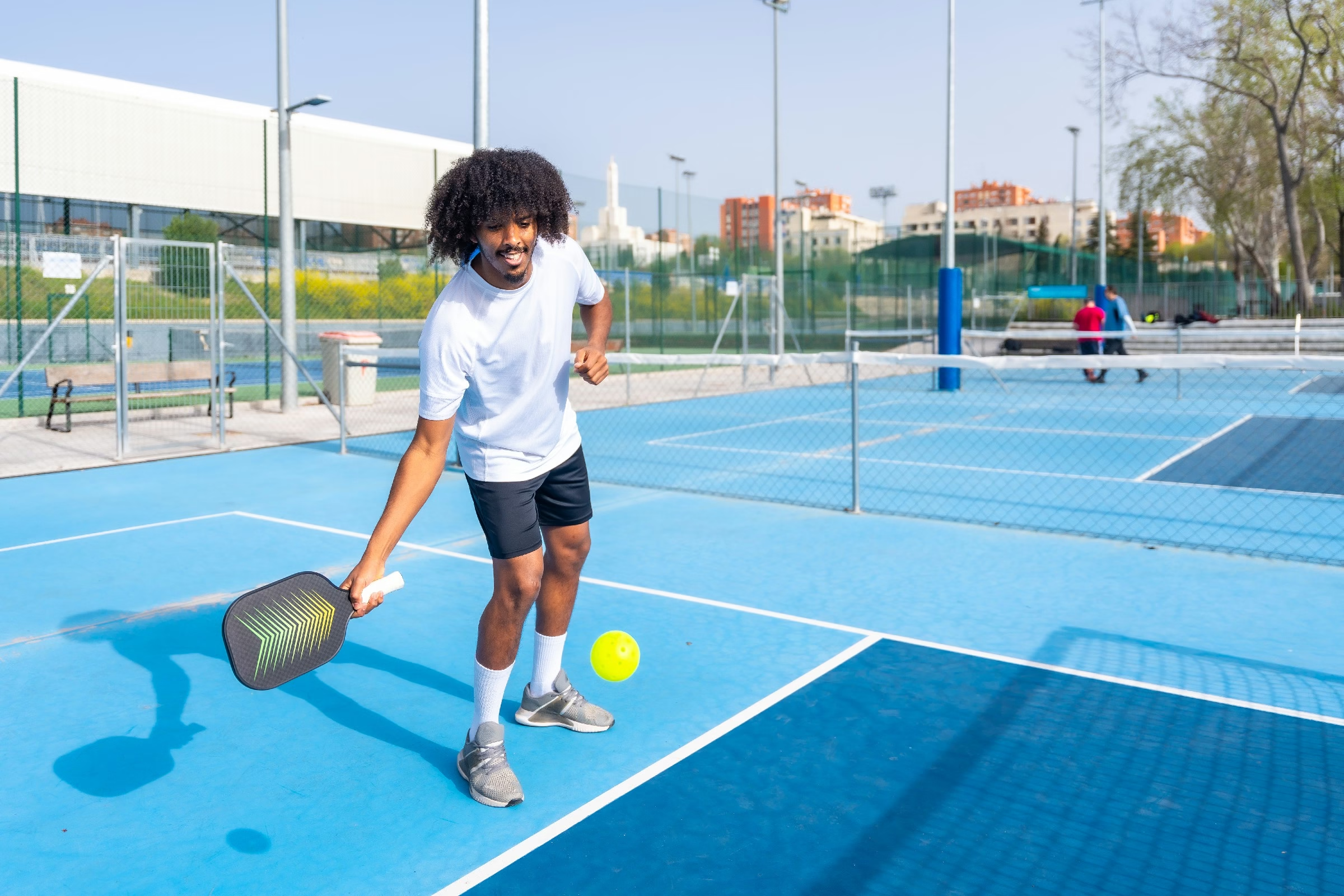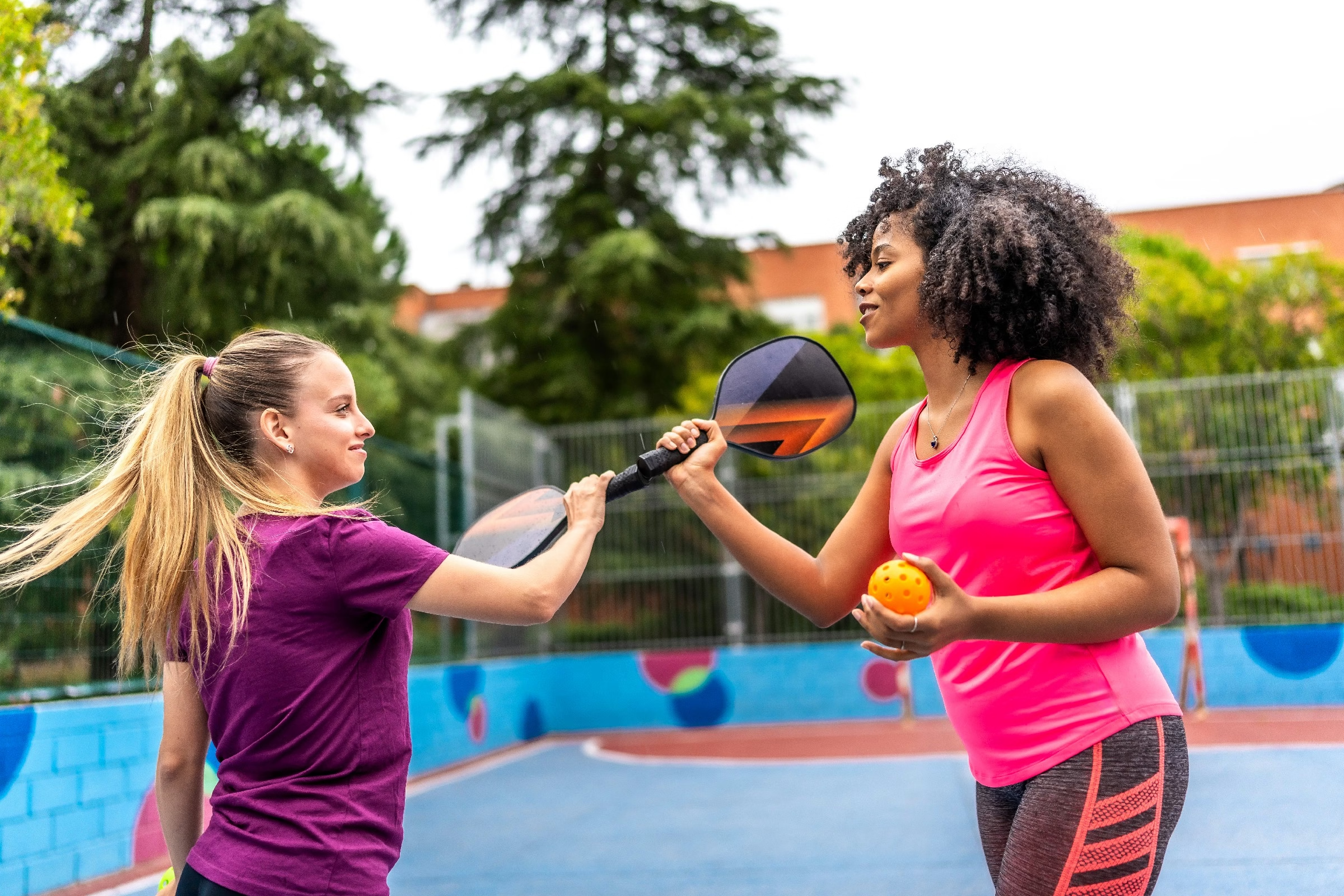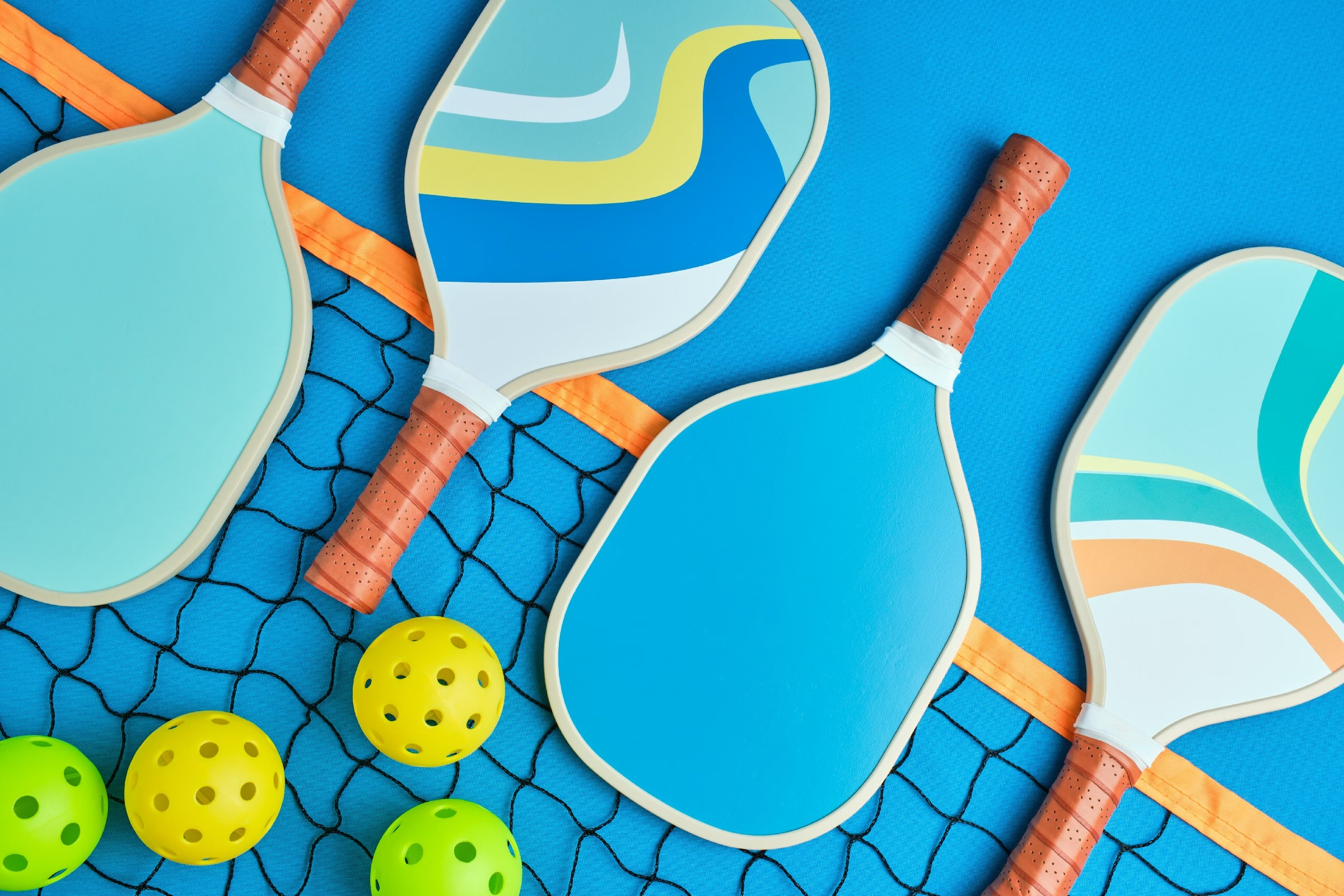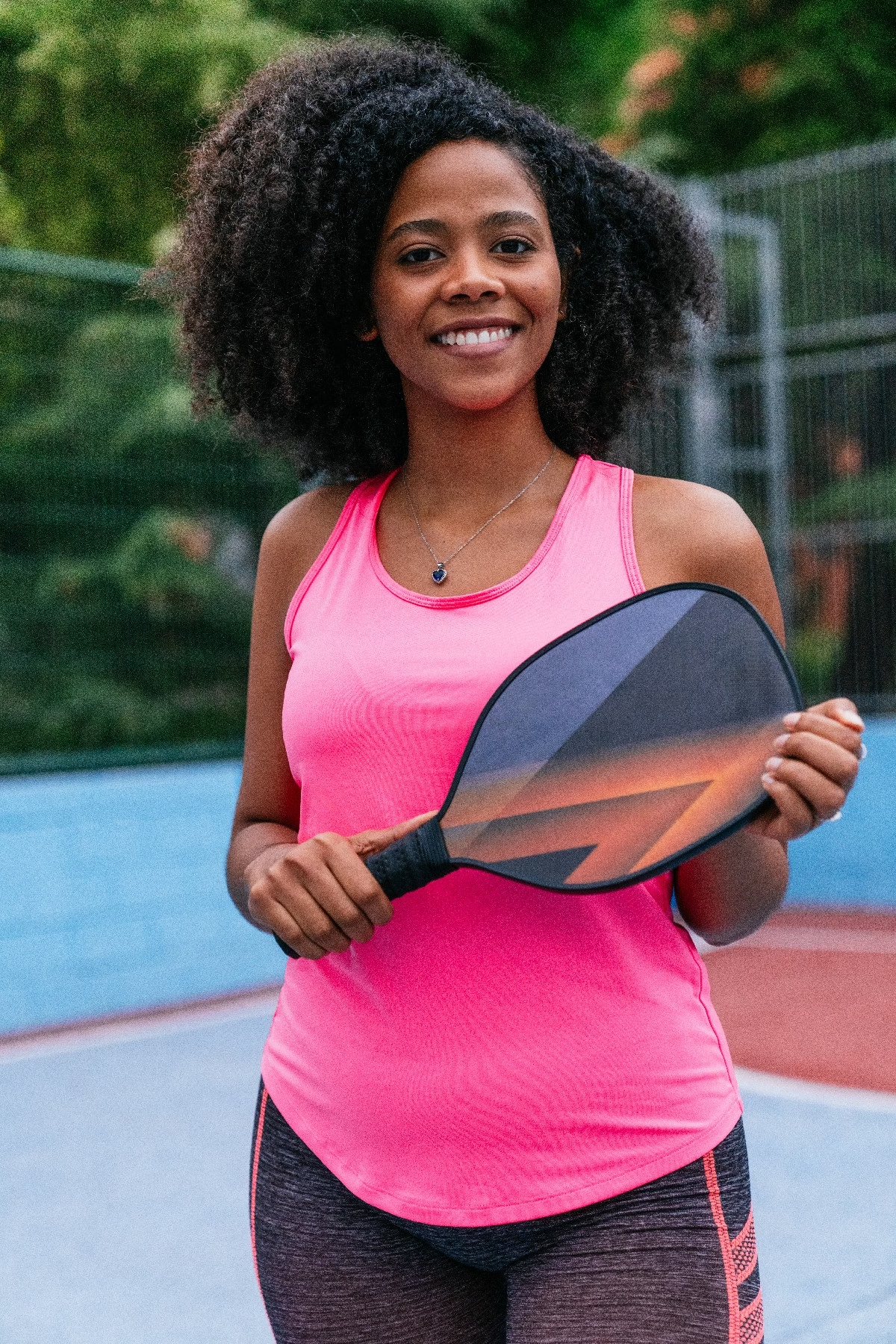Blog
what is the best grip for pickleball
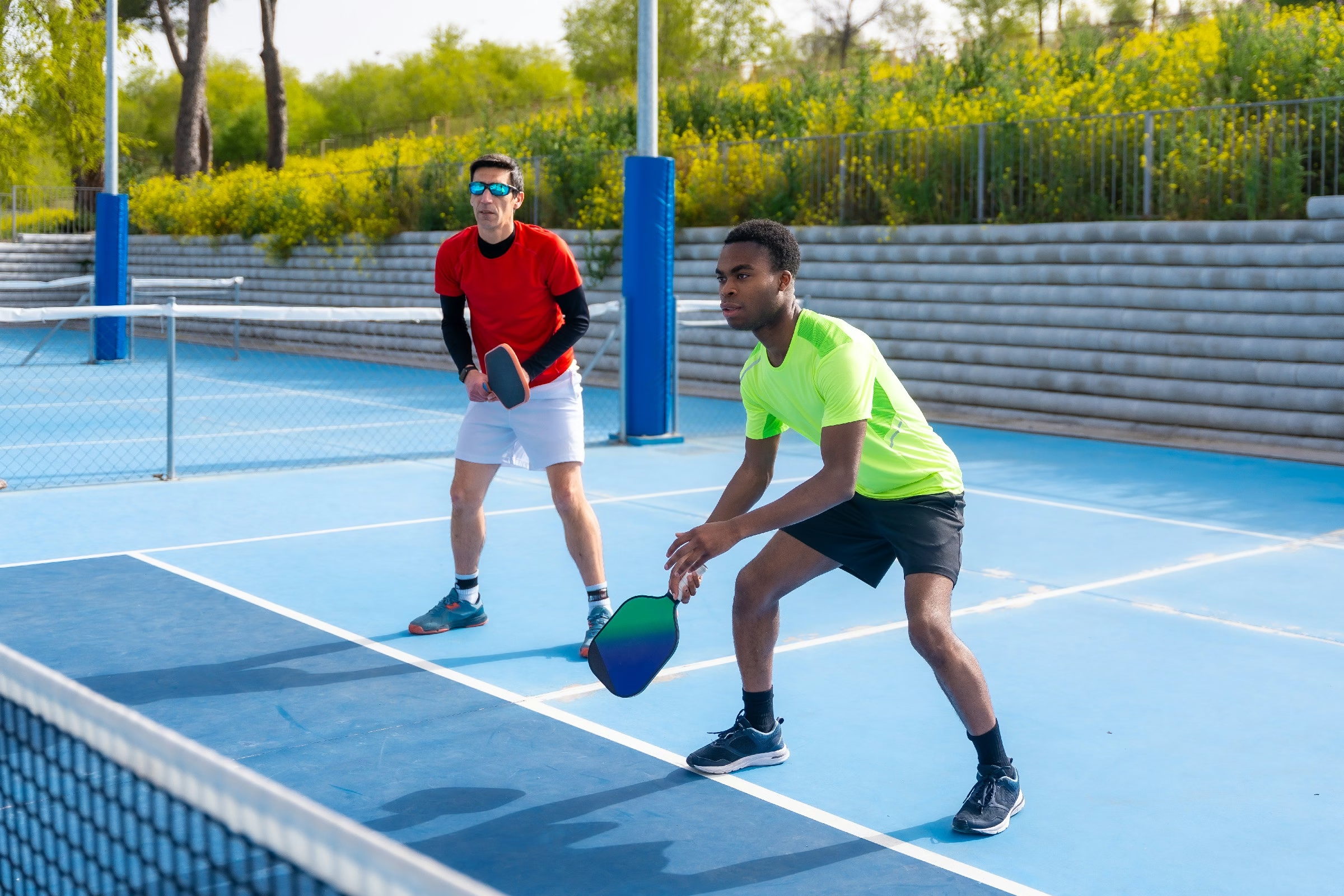
Finding Yoru Perfect Hold: The Best Grip for Pickleball
In the vibrant world of pickleball, where fast-paced rallies and strategic plays come together on the court, the right grip can make all the difference. As players of all levels join in on this thrilling sport, understanding the nuances of grip techniques becomes essential for enhancing performance and ensuring comfort. With various grips to choose from—each offering distinct advantages and ensuring control—navigating your options can feel overwhelming. This article delves into the most effective grips in pickleball, exploring their benefits, techniques, and how they can elevate your game. Whether you’re a seasoned player or new to the court, discovering the best grip for your unique style awaits.
Table of Contents
- Understanding the Basics of Pickleball Grip Techniques
- The Power of the Continental Grip: Versatility and Control
- Exploring the Eastern Grip for Enhanced Spin and precision
- how the Western Grip Can Transform Your Volley Game
- Finding Your Personal Comfort: Factors to Consider in Grip Selection
- Tips for Transitioning Between Different Grips During Play
- Q&A
- Concluding Remarks
Understanding the Basics of Pickleball Grip Techniques
When delving into the world of pickleball, the way you hold your paddle can considerably influence your game. Various grip techniques cater to different styles of play, so it’s essential to familiarize yourself with a range of methods. The two most popular grips are the Continental Grip and the Eastern Grip. The Continental Grip, often favored for its versatility, allows players to quickly switch between forehand and backhand strokes, making it ideal for both volleys and serves.Conversely, the Eastern Grip is characterized by a more ‘handshake’ hold, which can provide better topspin on groundstrokes, useful on slower surfaces.
Aside from these primary grips, advanced players often explore additional techniques to enhance their performance. The semi-Western Grip is another option, helping players generate more topspin while maintaining a solid foundation for both power and control. Each grip presents its own advantages, and the choice ultimately comes down to individual comfort and playing style. It’s crucial to practice switching grips during play; doing so can open up a variety of strategic options on the court,allowing for a more dynamic game.
Below is a comparison table of these popular grip techniques.Assess their characteristics to find the one that suits you best:
| Grip Technique | Best For | Pros | Cons |
|---|---|---|---|
| Continental Grip | Versatility | – Fast transitions between strokes – Good for volleys |
– May lack power on some topspin shots |
| Eastern Grip | Topspin | – Solid feel for groundstrokes – Easy to apply topspin |
– Less effective for volleys |
| Semi-Western Grip | powerful topspin | – Enhanced topspin potential – Solid for aggressive shots |
– Some difficulty on faster balls |
the Power of the Continental Grip: Versatility and Control
The continental grip stands out in pickleball for its remarkable adaptability, allowing players to seamlessly transition between various strokes. This grip shares its origin with traditional tennis and is characterized by positioning the paddle in a way that suits both forehand and backhand shots. As of its versatility, players using the continental grip can unleash slices, drives, and volleys without the need to adjust their hold significantly. This not only conserves energy but also bolsters the rhythm of play, making it a favorite among both beginners and seasoned competitors.
Control is another key component that the continental grip excels in providing. When players utilize this grip, they can achieve a superior degree of precision on their shots. This means that whether you’re attempting a delicate drop shot or a powerful overhead smash, your paddle remains aligned with the ball, enhancing the likelihood of landing your target. Furthermore, the grip allows for an easier readjustment mid-play, enabling players to react quickly to their opponents’ moves and twist the paddle for unpredictable shots.
The following table summarizes the key advantages of using the continental grip in pickleball:
| Advantage | Description |
|---|---|
| Versatility | Facilitates a range of shots without changing grip. |
| Control | Enhances precision and shot placement. |
| Efficiency | Reduces energy expenditure, maintaining player stamina. |
| Adaptability | Allows quick adjustments to gameplay strategies. |
Exploring the Eastern Grip for Enhanced Spin and Precision
For players seeking to improve their game, the Eastern grip offers a balance of spin and control that can elevate performance on the court. This grip is achieved by placing the base knuckle of your index finger on the third bevel of the paddle handle, allowing for a natural and cozy position. With this grip, players can easily transition between forehand and backhand strokes, enabling fluidity and adaptability in their gameplay.
One of the standout features of the Eastern grip is its capacity to impart topspin, making it notably effective for both drop shots and aggressive rallies. By harnessing a combination of wrist motion and follow-through, players can generate a heavier ball, which can disrupt their opponent’s rhythm. To maximize the effectiveness of the Eastern grip,consider these key techniques:
- Wrist Snap: Use a subtle wrist motion to create additional spin.
- Follow-Through: ensure your follow-through extends towards the target to maintain accuracy.
- Weight Transfer: Shift your weight from your back foot to your front foot during the shot for better power.
Moreover, this grip is particularly beneficial when it comes to precision shots. With a strong foundation in the grip, players can focus on their target, allowing for more controlled and accurate placements.Below is a brief comparison of the Eastern grip with other popular grips:
| Grip Type | Spin | Control | Ideal for |
|---|---|---|---|
| Eastern Grip | High | Moderate | Versatile Play |
| Western Grip | Vrey High | Low | Topspin Shots |
| Continental Grip | Moderate | High | Volley and Serves |
How the Western grip Can Transform Your Volley Game
Adopting the Western grip in your volley game can make a significant difference to your performance on the pickleball court. This grip allows players to generate more topspin, providing greater control and depth for their shots. The natural wrist snap associated with the Western grip enhances your ability to execute precise volleys, making it easier to place the ball where you want it to go. With practice, you’ll find that the grip promotes fluid movements, setting you up for more consistent and effective volleys.
Another major advantage of the Western grip is its compatibility with advanced techniques such as angle shots and quick reflex volleys. By using this grip,the paddle face is naturally positioned to create sharp angles,allowing for strategic placement that can catch opponents off guard. This grip also enhances your ability to attack high balls, providing a unique edge in fast-paced exchanges. embracing this style not only elevates your game but also gives you the confidence to take calculated risks at the net.
To help you visualize its impact, consider the following comparison of grip types and their advantages for volleys:
| Grip Type | Advantages |
|---|---|
| Western Grip |
|
| Eastern Grip |
|
| Continental Grip |
|
Finding Your Personal comfort: Factors to Consider in Grip Selection
When selecting a grip for pickleball, there are several personalized factors that can significantly impact your overall comfort and performance on the court. First, consider the size of your hand. Grip sizes typically range from small to large, and choosing a size that feels right is essential. A grip that is too small can lead to excessive hand tension or overexertion, while one that is too large might cause difficulty in maintaining control during play. Try out different sizes to see what feels most natural and secure in your hand.
Another critically important element to note is the texture of the grip. Grip material can vary from smooth to textured, with different surfaces offering varying levels of traction and comfort.Textured grips can provide better control and minimize slippage,especially in humid conditions. Your personal preference plays a role here—some players prefer a softer feel, while others lean toward a more rugged texture. It can be beneficial to experiment with various grip materials to find what complements your playing style.
Lastly, don’t overlook the grip style you choose. Options include standard,synthetic,or cushioned grips,each catering to different preferences. Standard grips are often firmer and more responsive, while cushioned grips can absorb shock, providing extra comfort during intense rallies. Consider factors like your typical play duration, level of competition, and even your personal injury history when selecting grip style. ultimately,striking the right balance between comfort and performance is key to enhancing your overall experience in pickleball.
Tips for Transitioning Between different Grips During Play
Mastering different grips is crucial for enhancing your performance on the pickleball court. Transitioning seamlessly between grips can significantly affect your control and shot accuracy. To achieve this, practice switching grips during drills, focusing on the feelings in your hands and how the ball interacts with your paddle. Here are some tips for a smooth transition:
- Hand Position: Know where to place your hand based on the type of shot. Such as, the continental grip is versatile for volleys and serves, while the eastern grip is ideal for forehands. Adjust your hand position quickly as you move into a new shot.
- Mindfulness: Be aware of your grip throughout the game. Pay close attention to the moment before you hit the ball and make a conscious effort to adjust your grip as needed. Developing this awareness can be a game-changer.
- Drills: Set aside time for grip-specific drills. For instance, practice alternating between volleys and groundstrokes while switching grips. This can help you build muscle memory, making transitions feel more automatic during actual play.
Another effective strategy is to maintain a fluid wrist movement. A relaxed wrist allows for easier transitions between grips,especially when switching from forehand to backhand. Incorporate wrist exercises into your training regimen to boost adaptability and strength, which will make grip adjustments more intuitive. Additionally,be mindful of how adjusting your body positioning can assist grip transitions. Keep your shoulders and hips aligned with the direction of your shot for a more natural grip switch.
| Grip Type | Best Use |
|---|---|
| Continental | Serves, volleys, and quick adjustments |
| Eastern | Forehand shots |
| Western | Powerful topspin forehands |
| Two-Handed Backhand | Stability and control on backhands |
remember that transitioning between grips is more than just a physical adjustment; it’s also a mental game. Visualization techniques can be incredibly beneficial.Before stepping onto the court, spend a few minutes imagining different scenarios where you might use each grip. Envision the perfect transitions, and incorporate this positive mindset into your gameplay. Consistent practice, combined with a strong mental approach, will empower you to shift grips fluidly and enhance your overall performance in pickleball.
Q&A
Q&A: What is the Best Grip for Pickleball?
Q1: What does “grip” refer to in pickleball?
A1: In pickleball, the term “grip” refers to how you hold the paddle. Your grip affects your control, power, and overall game performance. Choosing the right grip can enhance your shots and reduce the risk of injuries.
Q2: What are the different types of grips used in pickleball?
A2: There are several common grips players use in pickleball, including the Continental Grip, eastern Grip, and Western Grip. Each grip has its unique advantages and is suited for various playing styles and shots. The Continental Grip, such as, is versatile and can be used for volleys, serves, and overheads, while the Eastern Grip is great for topspin shots.
Q3: How do I know which grip is best for me?
A3: The best grip for you depends on your playing style, comfort level, and experience. Beginners may find the Continental Grip easier to master,while more advanced players might prefer the nuances of the Eastern or Western grips. Experimenting with different grips during practice can help you identify what feels most natural.
Q4: Can I change my grip as I become more experienced?
A4: Absolutely! Many players start with one grip and gradually transition to another as they develop their skills and discover their preferred playing style.Don’t hesitate to adapt; flexibility in your grip can improve your game over time.
Q5: Are there any specific grip sizes I should consider?
A5: Yes! Grip size can significantly impact your game. A grip that’s too small may lead to finger strain, while a grip that’s too large can limit control.A general rule of thumb is to make sure you can comfortably hold the paddle without excessive effort or pain. You can test grip sizes by holding the paddle and ensuring there is a snug space between your fingers and palm.
Q6: What are some tips for maintaining a good grip on the paddle?
A6: To maintain a solid grip, keep your hand relaxed yet firm, and avoid gripping the paddle too tightly, as this can hinder your swing. Regularly check for moisture; if your hands become slippery during gameplay, consider using a grip powder or wearing moisture-wicking gloves.
Q7: Can a grip change influence my overall game?
A7: Yes! A comfortable and appropriate grip allows for better shot execution, improved control, and reduced fatigue. players frequently enough find that experimenting with their grip can lead to enhanced performance and confidence on the court.
Q8: Where can I learn more about grips and playing techniques?
A8: There are numerous resources available online, including instructional videos, articles focused on playing techniques, and pickleball workshops. Connecting with experienced players or coaches can also offer valuable insights tailored to your specific needs.Enjoy exploring the world of grips and finding what works best for you on the court!
Concluding Remarks
In the dynamic world of pickleball, the grip you choose can significantly influence your game, shaping both your technique and your enjoyment on the court. Whether you opt for the classic Eastern grip,the versatile Continental grip,or the innovative western grip,the key lies in finding what feels right for you. Remember, there is no one-size-fits-all solution; the best grip is the one that enhances your control and confidence while allowing you to express your unique playing style.
As you step onto the court for your next match, consider experimenting with the grips discussed in this article. Embrace the learning process, and don’t shy away from making adjustments as you become more familiar with the game’s demands. With time, practice, and a keen understanding of your own preferences, you’ll find the grip that not only complements your play but also elevates your overall experience in this exhilarating sport.Happy playing!

